Finance
Top 10 High-Yield Savings Accounts in the US (2025 Edition)

Introduction to High-Yield Savings Accounts
High-yield savings accounts represent an advantageous alternative to traditional savings accounts, offering significantly higher interest rates to depositors. These accounts are specifically designed to help individuals maximize their savings potential, making them an attractive option amidst fluctuating interest rates prevalent in today’s economic landscape. Unlike conventional savings accounts which typically offer minimal interest, high-yield accounts provide rates that can exceed several times the national average, making them a valuable financial tool.
One of the primary differences between high-yield savings accounts and standard savings offerings is the interest rate structure. High-yield accounts often require a larger initial deposit or a minimum balance requirement to access elevated rates. Furthermore, these accounts are most often found at online banks or credit unions, which can afford to pass on savings from lower operational costs to their customers through better rates. Consequently, online high-yield savings accounts have gained popularity, particularly among tech-savvy individuals who prioritize convenience and competitive returns.
The benefits of utilizing a high-yield savings account extend beyond just lucrative interest rates. They also provide liquidity, enabling savers to withdraw funds easily when needed without penalties, unlike other investment vehicles such as CDs (Certificates of Deposit). With an influx of economic uncertainty and the rising cost of living, many individuals are turning to high-yield savings accounts as a means to safeguard their funds while still earning a noteworthy return. This dual capacity for liquidity and enhanced earnings makes them an appealing choice for both short-term and long-term savings goals.
As a result, the rising interest in high-yield savings accounts is a reflection of a broader trend toward more informed financial decision-making. Savers are increasingly acknowledging the importance of seeking out better options for their funds, thus creating a proactive approach to personal finance management in the current economic climate.
Criteria for Selecting High-Yield Savings Accounts
When evaluating high-yield savings accounts, several key criteria are essential for making informed comparisons. Understanding these factors not only aids consumers in selecting the right account but also clarifies what constitutes a ‘high-yield’ offering. The most prominent consideration is the interest rate, which directly affects the annual percentage yield (APY) that the account offers. A higher interest rate results in greater earnings on deposited funds, making it a top priority for savers.
Another critical factor is the account’s associated fees. It’s important to analyze any maintenance fees, transaction fees, or service charges that may diminish overall returns. Some institutions may advertise high yields but offset them with significant fees, ultimately leading to lower net gains. Therefore, a truly high-yield account should ideally have minimal to no fees.
The minimum deposit requirement is also noteworthy, as some accounts necessitate a substantial upfront investment. For many individuals, having an accessible low or no minimum deposit can facilitate the opening of a high-yield savings account without financial strain. In tandem with this, it is vital to confirm that the account is insured by the Federal Deposit Insurance Corporation (FDIC), which protects depositor funds up to a certain limit in the event of bank failure, providing an invaluable safety net.
Accessibility of funds is another important element; account holders should consider how easily they can withdraw or access their savings. Some accounts may impose limits on withdrawals or restrict access to funds, which can inhibit financial flexibility. Lastly, quality customer service options cannot be overlooked, as responsive support is crucial for resolving any issues or inquiries efficiently. Evaluating these criteria holistically will empower savers to make well-informed decisions while exploring their options among high-yield savings accounts.
Overview of the Current Banking Landscape in 2025
As we move into 2025, the banking landscape has undergone significant changes influenced by various economic factors, consumer behaviors, and advancements in technology. Interest rates, for instance, have seen notable fluctuations due to the ongoing adjustments made by the Federal Reserve in response to inflationary pressures. As inflation stabilizes, it is clear that high-yield savings accounts are becoming increasingly attractive to consumers seeking viable options for preserving and growing their wealth. Financial institutions are responding by offering competitive rates that entice savers and encourage the use of these accounts.
Consumer behavior has shifted dramatically in recent years, especially in the wake of the pandemic, with individuals prioritizing savings and financial security. Many have turned to high-yield savings accounts as a crucial part of their financial strategies. This trend reflects a broader societal inclination towards cautious spending and saving, which has been further propelled by the economic recovery observed through 2025. Banks are adjusting their offerings to cater to this newfound focus on savings, often revising their interest rates to remain competitive within the market.
Additionally, the rise of online banking has transformed how consumers interact with financial services. Digital-first banks, which typically operate with lower overhead costs, often provide higher interest rates on high-yield savings accounts compared to their traditional counterparts. This highlights a larger trend of technological advancements disrupting the traditional banking sector, allowing consumers to easily compare options and choose accounts that best meet their needs. As the banking landscape continues to evolve, competition among banks is expected to intensify, resulting in even more favorable terms for consumers in their quest for high-yield savings opportunities.
Top 10 High-Yield Savings Accounts Ranked
As of 2025, the landscape of high-yield savings accounts in the US has evolved, offering consumers a variety of options to help maximize their savings. Below is a curated list of the top ten high-yield savings accounts, ranked based on their interest rates, fees, and unique features.
1. Ally Bank High Yield Savings Account: With an attractive interest rate of 3.50%, this account requires no monthly maintenance fees and has a low minimum deposit of $0. Ally’s online banking features and robust mobile app make it a favorite among savers.
2. Marcus by Goldman Sachs High Yield Online Savings: Offering an interest rate of 3.45%, Marcus also boasts no monthly fees and no minimum deposit requirement. This account provides convenient online access and a straightforward banking experience.
3. American Express National Bank High Yield Savings Account: This account features a competitive interest rate of 3.40%, with no maintenance fees and a $0 minimum deposit. American Express is known for its exceptional customer service and easy-to-use mobile banking platform.
4. Discover Online Savings Account: With an interest rate of 3.30%, the Discover account has no monthly fees and a $0 minimum opening deposit. Discover also offers a cash-back rewards program for new users, enhancing its appeal to savers.
5. Capital One 360 Performance Savings: This account provides an interest rate of 3.25%, with no fees and a minimum deposit of $0. Capital One’s integrated banking solutions allow for seamless transitions between checking and savings.
6. CIT Bank Savings Builder Account: Offering a tiered interest rate starting at 3.25%, this account requires a minimum deposit of $100. It encourages savers to make regular deposits by offering higher rates for those who do.
7. Varo Savings Account: With an interest rate of 3.00% for eligible customers, Varo has no fees and a $0 minimum requirement. Its unique feature includes automatic savings tools that help users set financial goals efficiently.
8. Synchrony Bank High Yield Savings Account: This account features a 3.00% interest rate, no monthly fees, and a $0 minimum deposit. Synchrony also offers perks such as easy online access and CD tie-ins for improved earning potential.
9. TIAA Bank High Yield Savings Account: With an interest rate of 2.75%, this account requires a minimum deposit of $1,500 but does not impose monthly fees. TIAA Bank’s solid financial foundation makes it a secure choice for long-term savings.
10. Lake Michigan Credit Union High Yield Advantage Savings: Offering a 2.50% interest rate, this account has no fees and a $0 minimum deposit. Lake Michigan Credit Union is known for its commitment to member satisfaction, making it an attractive option for credit union members.
This ranking of high-yield savings accounts provides a comprehensive view of available options, allowing individuals to make informed decisions regarding their savings strategies and financial planning for 2025.
Benefits of High-Yield Savings Accounts
High-yield savings accounts have gained immense popularity as a reliable option for individuals looking to optimize their savings. One of the primary advantages of these accounts is the significantly higher interest rates compared to traditional savings accounts. This elevated rate allows individuals to accumulate more earnings on their deposited funds over time, capitalizing on the power of compounding interest. As interest accrues on both the principal and previously earned interest, savers can experience exponential growth in their savings, particularly when funds are left untouched for extended periods.
Moreover, high-yield savings accounts are often touted for their safety and soundness. Typically offered by well-established financial institutions, these accounts are generally insured by the Federal Deposit Insurance Corporation (FDIC) or the National Credit Union Administration (NCUA). This insurance ensures that depositors are protected up to $250,000 per depositor, per bank, giving peace of mind as individuals strive to grow their financial assets. Furthermore, these accounts provide excellent liquidity, allowing account holders to easily access their funds when needed. This aspect makes high-yield savings accounts a practical choice for those seeking a balance between earning interest and maintaining easy access to their money.
In the spectrum of financial strategies, high-yield savings accounts play a crucial role in short-term planning. They serve as an optimal solution for individuals saving for specific goals, such as vacations, emergency funds, or large purchases. By keeping money in a high-yield savings account, individuals can ensure their savings are not just sitting idle but are instead earning a competitive interest rate. Thus, these accounts are not only an avenue for increased earnings but also a critical component in effective financial planning and growth.
Common Fees and Charges to Watch Out For
When selecting a high-yield savings account, it is essential to consider the various fees and charges that may impact the overall yield of your savings. While these accounts typically offer higher interest rates than traditional savings options, certain fees can substantially diminish your earnings. Understanding these fees can help you make informed banking decisions.
One of the most prevalent charges is the monthly maintenance fee. Many banks impose these fees if the account balance falls below a specified threshold. This fee can range from a few dollars to around twenty dollars monthly, which, if incurred, directly reduces the interest earned on the account. It is advisable to choose a savings account with no monthly fees or one that waives them when certain conditions like a minimum balance are met.
Another common fee to be aware of is the excessive withdrawal fee. Many high-yield savings accounts limit the number of withdrawals or transfers you can make per month due to federal regulations. Transactions exceeding this limit may incur a penalty fee. Thus, it is prudent to monitor your transactions to avoid unnecessary charges while ensuring you access your funds as needed.
Minimum balance requirements can also impact your savings strategy. Some accounts require you to maintain a certain minimum balance to earn the advertised high-yield interest rate. Falling below this threshold might result in a lower interest rate, affecting your potential earnings. Therefore, carefully examining the terms of each high-yield savings account regarding minimum balances and resulting interest rates is critical.
In summary, comprehending the fees associated with high-yield savings accounts is crucial for maximizing your savings. By being proactive and selecting accounts with favorable terms, you can effectively avoid most of these fees and fully benefit from the advantages offered by high-yield savings accounts.
How to Open a High-Yield Savings Account
Opening a high-yield savings account is a straightforward process that can pave the way for improved savings growth. To begin, it is essential to gather the necessary documentation. Most banks will require a government-issued form of identification, such as a driver’s license or passport, proof of address, and a social security number. This identification helps establish your identity and ensures compliance with federal regulations.
Next, you will choose whether to apply online or in-person. Many financial institutions offer an online application process, which can be more convenient and quicker. You will typically need to fill out an application form on the bank’s website, which involves providing your personal information and indicating your initial funding deposit. Alternatively, if you prefer a face-to-face interaction, visiting a local branch allows you to speak directly with a representative who can guide you through the process.
When selecting the right bank for your high-yield savings account, it is important to consider factors such as interest rates, fees, and accessibility. Compare the annual percentage yield (APY) offered by different banks, as even a small difference can significantly impact your savings over time. Additionally, look for banks that have minimal or no fees to maximize the benefits of your savings account. Accessibility is also crucial; ensure that the bank has convenient ATM locations and user-friendly online banking services.
Finally, considerations for fund transfers should also play a role in your decision-making process. Verify how easy it is to deposit and withdraw funds from your high-yield savings account. Some banks may impose limitations on the number of transactions per month, while others may offer more flexibility. Being aware of these factors will help you make an informed choice as you open your high-yield savings account and embark on your savings journey.
Comparing Online Banks vs. Traditional Banks
When it comes to high-yield savings accounts, the choice between online banks and traditional banks presents various advantages and disadvantages that can significantly influence one’s savings strategy. Understanding these differences is essential for consumers looking to optimize their returns.
Online banks typically offer higher interest rates compared to their traditional counterparts. This advantage stems from their lower operational costs, as they often do not maintain physical branches. Customers at online banks may benefit from more competitive Annual Percentage Yields (APYs), making them an attractive option for savers aiming to grow their funds efficiently. However, it’s important to ensure that the online institution chosen is insured by the Federal Deposit Insurance Corporation (FDIC) to safeguard deposits.
On the other hand, traditional banks often provide a more familiar banking experience. Customers can meet with representative staff in person, which can be a significant advantage for those who prefer face-to-face interactions. Furthermore, traditional banks generally offer a wider range of financial products and services, including loans, mortgages, and investment accounts, making it convenient for customers seeking a comprehensive banking relationship.
Despite these benefits, traditional banks may come with lower interest rates on savings accounts, and they often charge fees for various services, which can eat into the overall savings. Additionally, the process to open and manage accounts in traditional banks may involve more bureaucracy compared to the streamlined, digital-first approach adopted by online banks.
In terms of accessibility and convenience, online banks tend to excel with user-friendly apps and websites that allow for quick account management and transactions. However, some customers may find the absence of physical locations a limitation if they prefer personalized customer service or need cash transactions. Ultimately, the decision between online and traditional banks will depend on individual preferences and savings goals.
Conclusion and Final Thoughts
High-yield savings accounts have cemented their place as a vital component of sound personal finance management, especially as we approach 2025. Throughout this blog post, we have explored the top 10 high-yield savings accounts currently available in the United States, highlighting their varying interest rates, fees, and features. These accounts provide an excellent opportunity for individuals to earn substantial interest on their savings, often exceeding the rates offered by traditional savings accounts. As interest rates fluctuate, the choices available in the realm of high-yield savings accounts are likely to evolve, requiring consumers to remain vigilant and proactive.
It’s imperative for individuals to evaluate their savings options thoroughly. By considering the advantages of high-yield savings accounts, such as liquidity and competitive interest rates, readers can make informed decisions that align with their financial goals. Whether one is saving for a short-term expense or building an emergency fund, high-yield savings accounts offer a viable pathway to earn more from saved funds. Furthermore, it’s essential for consumers to periodically reassess their financial strategy to ensure they are taking full advantage of the best available rates and services.
Looking ahead, future trends in high-yield savings accounts may include further digital innovations, enhanced customer service options, and competitive offerings as financial institutions strive to attract and retain customers. As the landscape of personal finance continues to evolve, staying informed about these trends will empower individuals to make the best choices for their financial futures. By taking action now and exploring the suggested high-yield savings accounts, readers can take the first step toward maximizing their savings as we enter 2025.
Investing
Global Investor Outflows from U.S. Stocks & Dollar
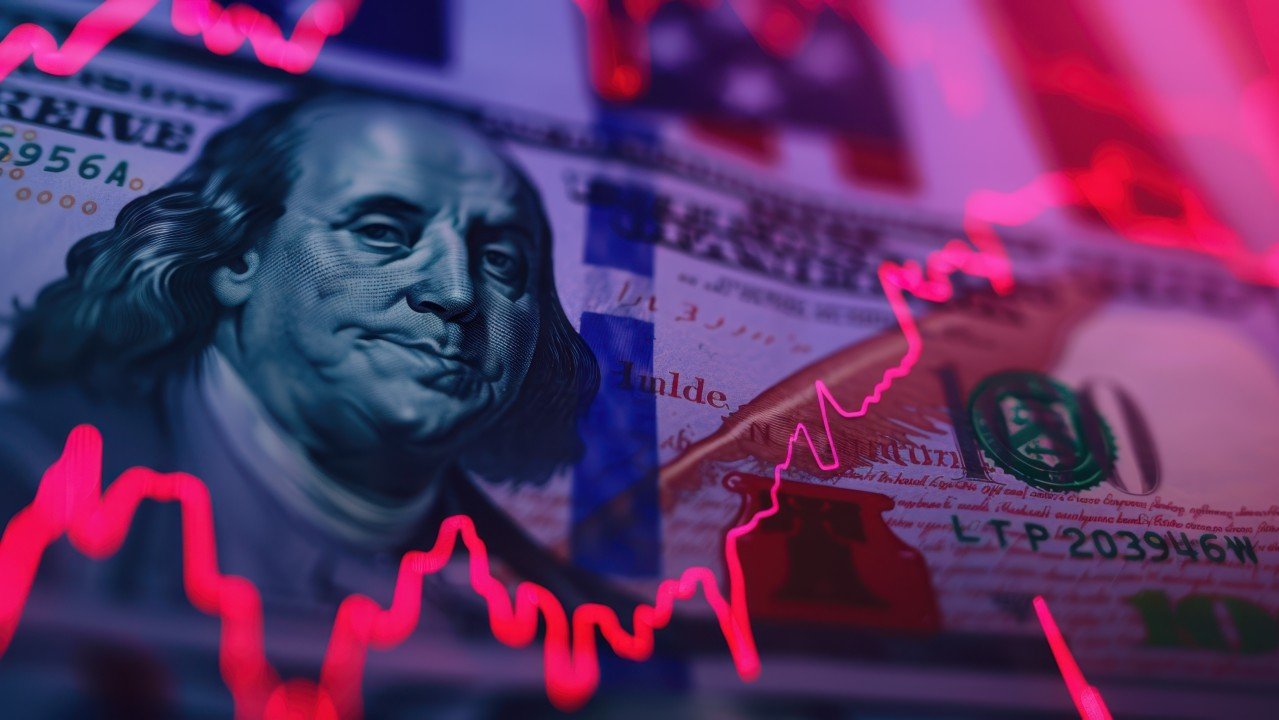
In a shift that is sending ripples across financial markets, institutional investors around the world are pulling back from U.S. equities and reducing exposure to the U.S. dollar, signaling a significant change in sentiment toward American assets. According to the latest Bank of America Global Fund Manager Survey, global investors are now the most underweight on U.S. stocks in more than two decades, with the dollar facing similar skepticism as a long-term safe-haven asset. This transition is being fueled by multiple converging factors, including geopolitical instability, growing U.S. fiscal deficits, trade tensions, and an increasingly favorable investment climate in Europe and select emerging markets. For investors, economists, and policymakers alike, this trend represents a rebalancing of global capital flows that could reshape market dynamics in the months ahead.
Investor Sentiment Toward U.S. Markets Hits Multi-Year Lows
The Bank of America survey, considered a key barometer of global institutional sentiment, reveals that fund managers have turned heavily underweight on U.S. stocks and the dollar, preferring instead to rotate their portfolios into European and Asian equities. The survey showed that 36% of participants are now net underweight U.S. equities—the highest level since 2003. At the same time, positioning on the dollar turned net negative for the first time in over five years, with investors citing mounting fiscal concerns, valuation extremes, and weakening macroeconomic indicators.
The U.S. equity market, especially the tech-heavy NASDAQ, has experienced an extraordinary bull run over the last several years. But now, investors are questioning the sustainability of elevated valuations, particularly as economic growth slows, earnings forecasts are revised downward, and inflation remains persistently above target. Many portfolio managers believe the best returns may no longer be found in U.S. assets alone.
Rising U.S. Debt and Fiscal Deficits Raise Red Flags
A key driver of investor caution is the ballooning U.S. fiscal deficit. The Congressional Budget Office (CBO) projects that the U.S. federal deficit will reach over $1.8 trillion this year, driven by increased government spending, rising interest costs, and lower-than-expected tax revenues. The national debt is now projected to exceed 125% of GDP by 2030, raising serious questions about long-term fiscal sustainability.
Investors fear that soaring U.S. debt levels could lead to a loss of confidence in Treasury securities, pushing yields higher and triggering volatility in global credit markets. This concern is magnified by the growing political polarization in Washington, which has led to repeated debt ceiling standoffs and policy gridlock. As a result, some asset managers are choosing to diversify their bond portfolios with sovereign debt from countries like Germany, Canada, and Australia—nations viewed as having stronger fiscal discipline.
Geopolitical Tensions Erode Dollar Safe-Haven Appeal
The traditional role of the U.S. dollar as a global safe-haven currency is also being called into question. With the U.S. now embroiled in rising geopolitical conflicts, including its military engagement in the Middle East and an escalating trade war with China, the perception of the dollar as a “neutral” or stable currency is beginning to fade. Several countries, particularly in the Global South, have voiced frustration over the dominance of the dollar in international trade, and some have even accelerated efforts to settle trade in alternative currencies such as the euro, yuan, or local currency blocs.
In response, central banks in emerging markets are reducing their U.S. dollar reserves and increasing holdings in gold and non-dollar currencies. This trend, while gradual, is gaining momentum and contributing to the dollar’s underperformance against a basket of global currencies. The U.S. dollar index (DXY) has declined by nearly 6% year-to-date, reflecting both diminished investor confidence and a broader reconfiguration of reserve management strategies.
Attractive Valuations Abroad Drive Capital Outflows
While risks in the U.S. are mounting, attractive investment opportunities abroad are also contributing to the outflow of capital from American markets. European equities, particularly in sectors like green energy, luxury goods, and financial services, are seeing renewed interest thanks to relatively low valuations and improving macroeconomic stability. The recent ECB rate cuts and Eurobond discussions have added to optimism about the region’s fiscal and financial integration.
In Asia, countries like India, Indonesia, and Vietnam are emerging as new hotspots for foreign direct investment and equity inflows. These economies offer robust growth prospects, younger demographics, and increasingly tech-driven industries. Additionally, Japan’s bond market is seeing increased institutional buying, as long-term yields rise in response to the Bank of Japan’s policy changes.
This global diversification strategy is not just about seeking higher returns—it’s also about managing risk. Investors are increasingly looking to balance their portfolios geographically, reducing dependence on any single region and hedging against macroeconomic shocks that may be specific to the U.S.
Currency Hedging and Diversification as Defensive Strategies
In response to the dollar’s volatility, many fund managers are now engaging in currency hedging strategies to protect their portfolios. Currency ETFs, options, and forward contracts are being used to minimize the downside risk of a weakening dollar. At the same time, global investment funds are ramping up their exposure to non-dollar-denominated assets, including eurozone corporate bonds, emerging market debt, and local-currency sovereign issues.
Moreover, ESG and green bond markets in Europe and Asia are attracting capital due to their alignment with global sustainability goals. These instruments not only offer diversification but also align with broader institutional mandates on responsible investing.
Implications for U.S. Markets and Monetary Policy
The capital flight from U.S. assets could have significant implications for American markets. A persistent decline in foreign demand for U.S. Treasuries may force the Federal Reserve to intervene more frequently in the bond market to maintain liquidity and control yields. At the same time, a weaker dollar could contribute to imported inflation, complicating the Fed’s efforts to bring core inflation back within its target range.
On the equities side, if investor outflows persist, U.S. companies may face higher capital costs and declining valuations, particularly in sectors that rely heavily on foreign investment or exports. Domestic pension funds and institutional investors may need to fill the gap left by global investors, which could further alter asset allocation strategies and influence corporate financing decisions.
A New Era of Global Capital Rotation
The growing shift away from U.S. stocks and the dollar signals the beginning of a new era in global investing, one defined by diversification, geopolitical hedging, and currency rebalancing. While the U.S. remains a central player in global finance, the days of unquestioned dominance are beginning to fade, as investors embrace a more nuanced and distributed view of risk and opportunity.
For market participants, staying agile in this environment means tracking global fund flows, monitoring geopolitical developments, and reassessing the traditional U.S.-centric portfolio model. As capital continues to flow into European and Asian markets, the future of global finance is being rewritten—and those who adapt early may find themselves ahead of the curve.
Finance and Economy
France Pushes Eurozone Toward Joint Eurobond Issuance
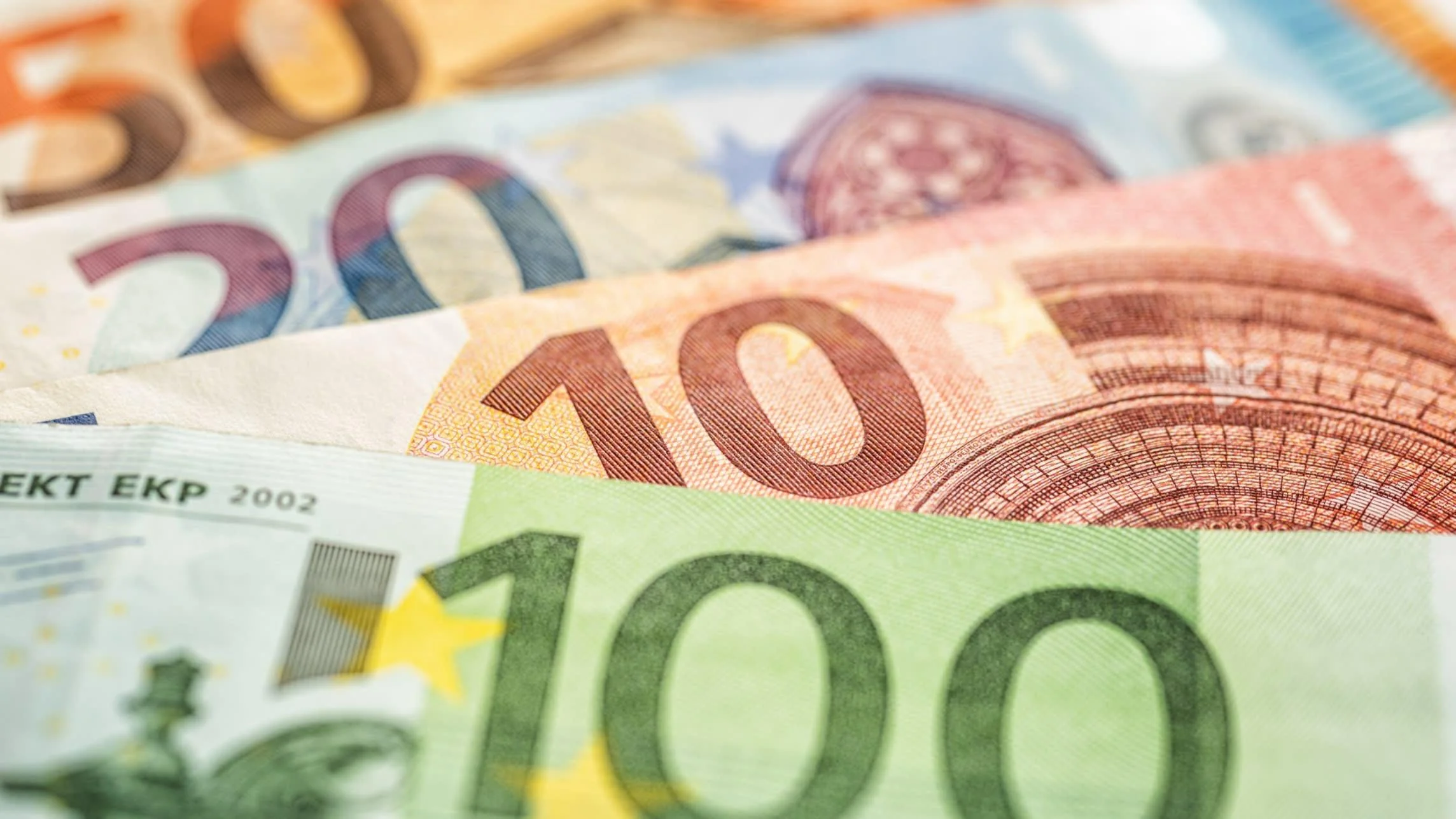
In a bold move that could redefine the financial architecture of the European Union, France has renewed its push for the issuance of joint eurozone debt instruments – commonly referred to as Eurobonds – as a way to strengthen the euro on the global stage. As the EU prepares for its upcoming summit on June 26-27, the proposal is once again stirring heated debate among member nations. French officials argue that a shared debt mechanism is essential not only for financial resilience but also for elevating the euro’s standing as a credible alternative to the U.S. dollar. While the idea garners support from key institutions like the IMF and the ECB, resistance from fiscally conservative member states continues to block consensus. This article explores the implications of France’s proposal, the potential benefits and challenges of Eurobond issuance, and the evolving role of the euro in a multipolar financial world.
France’s Strategic Case for Eurobonds
French President Emmanuel Macron and Finance Minister Bruno Le Maire have long been advocates for deeper EU financial integration. According to them, Eurobonds would represent a tangible step toward fiscal solidarity and monetary cohesion, allowing member nations to borrow at collectively favorable rates while demonstrating political unity. The latest push comes at a time when the European economy is facing several headwinds: slowing growth, fragmented recovery across member states, and heightened global financial volatility triggered by geopolitical conflicts and energy insecurity. Macron has reiterated that a common debt tool is essential for financing major EU-wide projects such as green energy transition, digital infrastructure, and military defense.
From a strategic standpoint, France views Eurobonds as more than just a financial mechanism – they are a symbol of EU credibility and resilience. By pooling risk and aligning borrowing capacity, the eurozone could present a united front in capital markets, reducing the vulnerability of weaker economies and improving the euro’s attractiveness to foreign investors.
The Euro’s Current Global Standing and Its Challenges
Despite being the world’s second most-used currency, the euro still lags far behind the U.S. dollar in terms of global reserve share, trade settlement, and safe-haven preference. Analysts point out that one of the primary reasons for this is the fragmented nature of the eurozone bond market. Each country issues its own sovereign debt, leading to a lack of a single, risk-free eurozone bond benchmark – unlike U.S. Treasuries, which offer deep liquidity and low risk.
France’s proposal seeks to address this imbalance. A unified Eurobond market could create a highly liquid, stable, and scalable financial product that would attract central banks, pension funds, and sovereign wealth investors. Over time, this could shift more global reserves into euros, boosting the currency’s influence in global trade and finance.
Institutional Support: IMF, ECB, and Market Participants
Key international organizations have thrown their weight behind the idea. The International Monetary Fund (IMF) has suggested that Eurobonds could enhance the EU’s fiscal capacity and crisis response agility. Meanwhile, European Central Bank (ECB) officials, including President Christine Lagarde, have hinted that deeper fiscal integration is necessary for the euro to realize its full potential.
Financial market participants have also shown interest. Asset managers argue that Eurobonds could become a cornerstone of fixed-income portfolios, particularly for investors looking to diversify away from dollar-denominated assets. Some analysts compare the opportunity to the creation of the U.S. Treasury market in the post-war era, which laid the groundwork for the dollar’s global dominance.
Opposition from the Frugal Four and Risk-Sharing Concerns
Despite France’s enthusiasm and institutional support, significant opposition persists from fiscally conservative EU nations, notably Germany, Austria, the Netherlands, and Finland—often dubbed the “Frugal Four.” These countries argue that shared debt would penalize responsible fiscal behavior and open the door to moral hazard, where weaker economies might overborrow under the protection of joint guarantees.
German officials have also cited constitutional constraints and public opposition to any perceived “debt mutualization.” Instead, they advocate for reforms at the national level, more stringent budget controls, and the use of existing mechanisms like the European Stability Mechanism (ESM) for crisis funding.
This divide continues to stall formal negotiations. At the heart of the debate is the question of trust and fiscal governance, as many northern states remain skeptical about the long-term commitment of their southern counterparts to austerity and budget discipline.
Implications for Financial Markets and Investors
If approved, Eurobonds would be a game-changer for European capital markets. They would offer a new safe asset class, potentially rivaling U.S. Treasuries in size and reliability over the long term. For the European banking system, Eurobonds could provide high-quality collateral and improve liquidity conditions, especially for cross-border lending.
Investors are closely monitoring the situation. If the EU takes concrete steps toward joint bond issuance, bond yields across peripheral economies like Italy, Spain, and Greece could compress further, as risk premia shrink in anticipation of shared guarantees. Simultaneously, euro-denominated assets may see a surge in foreign inflows, especially from central banks seeking to rebalance reserve portfolios.
Strengthening the Euro’s Role in a Multipolar World
The geopolitical landscape is increasingly defined by multipolarity, with China, Russia, and the U.S. competing for influence in trade, finance, and security. In this context, the eurozone faces a historic opportunity to carve out a more assertive role. Strengthening the euro through fiscal and capital market integration is seen as essential to counterbalance the dollar’s dominance and reduce reliance on U.S.-led financial infrastructure.
Eurobonds could serve as a financial pillar in this transition. As global investors seek alternatives in a fragmented world economy, the euro’s rise as a stable, investable, and liquid currency backed by joint instruments could bolster its credibility and utility.
A Defining Moment for European Unity
France’s push for Eurobonds is more than just a fiscal proposal – it is a call for political and financial unity in a time of global uncertainty. While the road to consensus is steep, the growing support from institutions, investors, and southern EU members suggests that momentum is building. The upcoming EU summit will be a crucial test of the bloc’s ability to move beyond national interests and toward a shared financial future.
If successful, Eurobond issuance could redefine the eurozone’s role in the global economy, offering new tools for crisis response, economic development, and financial competitiveness. For investors and policymakers alike, this moment marks a critical juncture – either Europe seizes the opportunity to lead, or it risks remaining a secondary player in a rapidly evolving financial world.
Finance and Economy
Oil Price Spike as Middle East Conflict Deepens: A Global Market Wake-Up Call
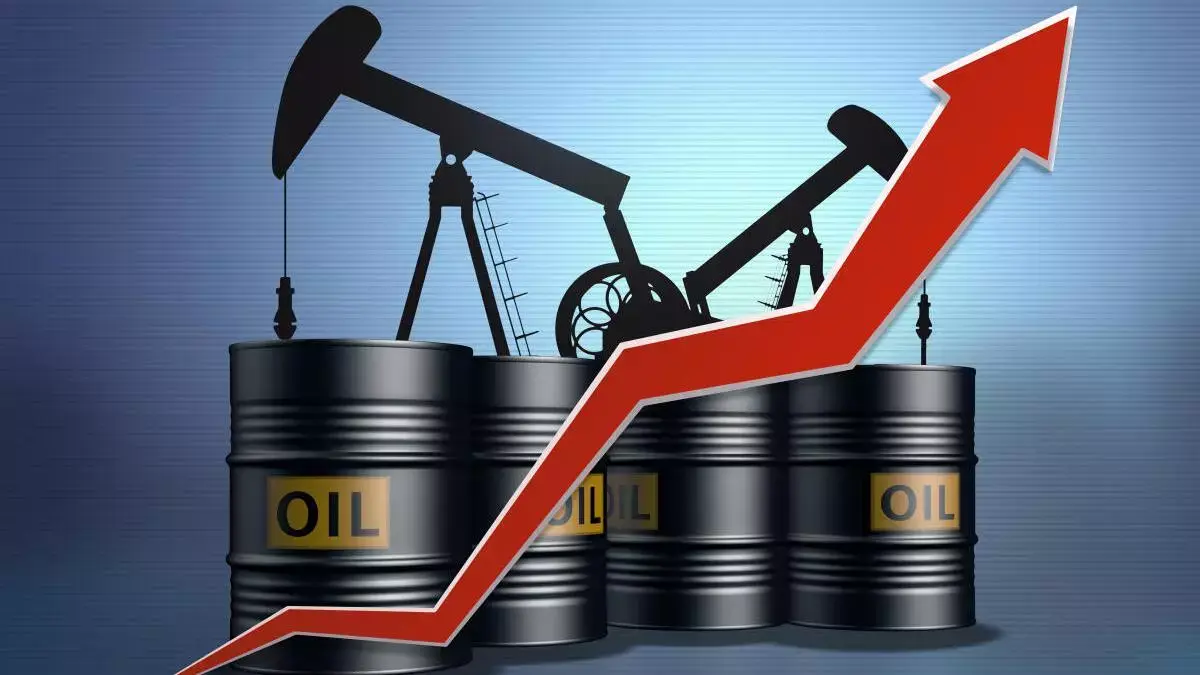
The financial world is once again on high alert as escalating tensions in the Middle East have triggered a sharp surge in global oil prices, sending shockwaves through equity, commodity, and currency markets alike. With the U.S. reportedly striking Iran’s nuclear sites, Brent crude surged over 18%, nearing $80 per barrel in a matter of hours. The sudden volatility reignited fears of a potential $100 oil scenario, reminiscent of past geopolitical flashpoints that deeply impacted global supply chains, inflation expectations, and central bank policy stances. This article delves into the causes, consequences, and global financial implications of this emerging crisis.
The Trigger: U.S. Strikes on Iran’s Nuclear Infrastructure
On June 21, 2025, international news outlets confirmed that U.S. military forces had targeted Iranian nuclear facilities in what they described as a “pre-emptive defensive measure.” While the full extent of the damage is still being assessed, the attack has clearly escalated tensions in an already volatile region. The Middle East, being a vital hub for global oil production and shipping, plays a significant role in maintaining supply stability. Iran, which controls access to the Strait of Hormuz – a key chokepoint through which nearly 20% of the world’s oil supply passes—responded with threats to close the strait and intensify its military posturing. This heightened the risk premium in energy markets virtually overnight.
Oil Prices React Swiftly to Geopolitical Instability
Crude oil, especially Brent and West Texas Intermediate (WTI), reacted with extreme sensitivity to the developments. Brent crude jumped over 18% within a 24-hour period, while WTI saw a comparable surge. Analysts at Goldman Sachs and JPMorgan warned that if the Strait of Hormuz were to be blocked, prices could surpass $100 per barrel within weeks. The last time the oil market saw such an intense geopolitical premium was during the 2019 drone attacks on Saudi oil facilities. However, the current situation has a more severe undertone due to the involvement of nuclear assets and direct military strikes between two powerful adversaries.
Safe Haven Assets Soar as Risk Appetite Declines
As is common in times of geopolitical crisis, investors flocked to safe-haven assets such as gold, the U.S. dollar, and U.S. Treasuries. Gold climbed above $2,400 per ounce, a level not seen in years, while the U.S. dollar index rose nearly 2% as capital fled emerging markets and riskier assets. Meanwhile, 10-year U.S. Treasury yields fell sharply, reflecting a surge in demand for perceived low-risk instruments. Cryptocurrency markets, particularly Bitcoin, experienced a brief rally as some investors viewed digital assets as alternative stores of value, although that rally quickly reversed amid broader market instability.
Stock Markets Face Broad Sell-Off, Led by Energy-Sensitive Sectors
Equity markets around the globe responded negatively. The S&P 500 and NASDAQ both dropped over 2.5% in intraday trading, led by declines in consumer discretionary, industrials, and airline stocks, which are highly sensitive to fuel price increases. European indices such as the FTSE 100 and DAX also saw steep losses, while Asia-Pacific markets like the Nikkei 225 and Hang Seng Index fell sharply as investors priced in a higher global risk premium. Interestingly, energy stocks provided the only bright spot in an otherwise red sea of market activity, with companies like ExxonMobil and Chevron posting strong gains on expectations of rising revenues.
Inflationary Pressures Could Derail Central Bank Strategies
The surge in oil prices couldn’t have come at a worse time for global central banks. After years of battling inflation through aggressive interest rate hikes, many central banks had only just begun to pause or consider rate cuts in 2025. However, higher energy prices feed directly into inflation, particularly in transport, manufacturing, and agriculture sectors, potentially forcing monetary authorities to reverse their dovish pivot. The European Central Bank (ECB), which had recently initiated its first rate cut in years, may now face pressure to hold off on further easing. Similarly, the Federal Reserve, which had opted to maintain its current rate in the last FOMC meeting, is likely to adopt a more hawkish tone moving forward.
Emerging Markets Bear the Brunt of the Crisis
The fallout from spiking oil prices is especially damaging for emerging markets, which are typically more sensitive to commodity price fluctuations. Countries like India, Turkey, and South Africa, which are major oil importers and have significant current account deficits, saw their currencies depreciate against the dollar. This adds to inflationary pressures and increases the cost of dollar-denominated debt, complicating fiscal and monetary policy responses. Foreign institutional investors also withdrew capital from these markets, adding to equity market stress and further depressing sentiment.
Global Economic Growth at Risk
Economists are revising down global GDP forecasts amid fears that higher oil prices will dampen consumer spending, elevate production costs, and destabilize corporate earnings. According to the IMF, a sustained oil price above $90 could reduce global GDP growth by 0.5% annually, with some regions like Southeast Asia and Sub-Saharan Africa experiencing even greater negative impacts. Supply chains, already recovering from post-pandemic disruptions and trade tensions, now face renewed uncertainty due to potential shipping bottlenecks in the Persian Gulf.
Outlook: What Comes Next for Markets and Policymakers?
Going forward, much depends on how the situation in the Middle East evolves. A de-escalation through diplomatic channels, possibly via UN or EU mediation, could stabilize oil prices and soothe market nerves. On the other hand, if Iran follows through on its threat to block the Strait of Hormuz or retaliates militarily, the crisis could escalate into a full-blown regional conflict with severe repercussions for global trade and energy supply. Policymakers worldwide are monitoring the situation closely, and emergency meetings by OPEC and G20 finance ministers are already being planned. The International Energy Agency (IEA) has also signaled its willingness to release strategic petroleum reserves if needed to calm markets.
The Road Ahead is Uncertain but Manageable
In the face of rising geopolitical tensions and economic uncertainty, investors are advised to adopt a cautious, diversified approach. While markets remain volatile and unpredictable, sound investment principles – such as maintaining a balanced portfolio, avoiding over-leveraged positions, and focusing on long-term fundamentals – remain more relevant than ever. The oil price spike triggered by the U.S.-Iran conflict is a potent reminder of how global politics and finance are deeply intertwined, and why staying informed and agile is critical in today’s interconnected world.
-

 Finance & Investment6 months ago
Finance & Investment6 months agoEmerging Markets to Watch in 2025: Opportunities and Risks
-

 Technology and Finance8 months ago
Technology and Finance8 months agoThe Future of Quantum Computing in Financial Modeling and Trading
-
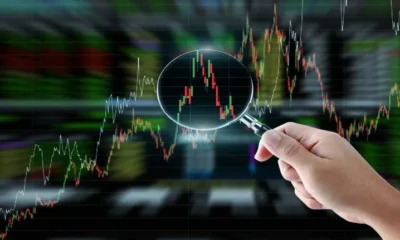
 Finance7 months ago
Finance7 months agoUSA Market Trends & Global Finance Insights
-
Finance7 months ago
Navigating Retirement in the Gig Economy: Challenges and Solutions
-
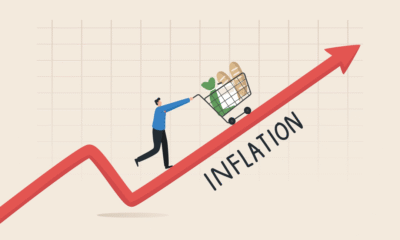
 Finance8 months ago
Finance8 months agoNavigating Personal Finance in the Age of Inflation and High Interest Rates
-
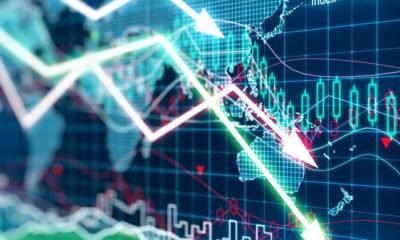
 Economics6 months ago
Economics6 months agoGlobal Markets React to U.S. GDP Contraction: A Comprehensive Analysis
-

 Investing & Finance8 months ago
Investing & Finance8 months agoFractional Investing: The Path to Wealth Democratization
-

 Finance8 months ago
Finance8 months agoDecentralized Finance (DeFi): Opportunity or Risk? A Deep Dive into the Rise of DeFi Platforms and Their Challenge to Traditional Finance




